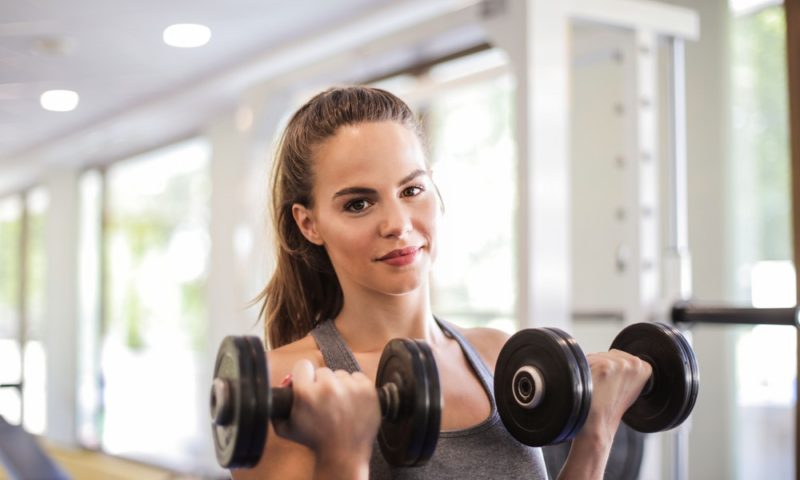Walk before You Can Run
Think back to when you were first in school. Would your teacher have you write an essay without learning the alphabet? What about attempting calculus without knowing how to add and subtract? Probably not. A foundation should be set before any complex structures can be placed.
The same concept can be utilized for exercise. It’s called “Progressive overload,” or the gradual increase of stress placed upon the body during exercise. Just like a school teacher would start by teaching letters, then turning those into longer words of three, five or ten letters, an exercise routine is built with small steps at a time to create a lifestyle change.
To Weight or Not to Weight?
If you’re starting an exercise routine for the first time, you don’t necessarily need a gym or the machines and weights they offer. To begin, you can use what your body already has! Starting off with body weight exercises lets you perform a variety of different movements without having to buy any costly equipment. Body weight exercises can include:
- Planks
- Step-ups
- Squats
- Lunges
- Tricep dips
- Push-ups
As your body gets stronger and needs more resistance, start with light weights — anywhere from 2-5 pounds. Low pound weights allow your body to gradually build muscle with a low risk of form compensation. You may have seen people lift weights that are too heavy or use additional muscles that aren’t required. This can not only increase your risk of injury, but also lead to muscle fatigue.
Dumbbells are a great place to start as they range from 1-100 pounds. You might also be tempted to use exercise machines. However, many pieces of equipment only move in limited ranges of motion that the machine allows. Free weights, such as dumbbells and kettle bells, allow the body to move in the ranges of motion it is intended to.
When going through an exercise program, make sure you have variation in your workouts. This can be as simple as the amount of weight and/or repetitions you are performing.
Repetition is the Mother of Skill
Now determine how many repetitions to perform. Try starting with light weights and moderate to high repetitions. For example, do Tricep extensions with five pounds in each hand for 15 to 20 reps. This is called “muscular endurance,” or the ability to perform repetitive muscle movements against some resistance. Repeating the same movement is very similar to singing the alphabet before putting sentences together. You must master the basics first!
Remember to have variation in your exercise plan! This can be as easy as performing the same Tricep Extension but switching to an eight-pound weight for 15-20 reps. You might ask, “When do I move up in weight or repetitions?” You want the exercise to feel challenging around the last 3-5 reps. If you’re performing 20 reps and are not challenged, change the weight. If you’re using a 15-pound dumbbell and are struggling to get 12 reps with a goal of 20, decrease the weight until you can perform 20 repetitions without movement compensation.
One Step at a Time
A combination of low weight and high repetitions will create long-lasting health benefits and decrease your risk of injury. Exercises that are performed for a long duration with light to medium effort will build muscle more effectively and efficiently than heavy weights and incorrect form.
“Progressive Overload” is much like a staircase — you have to take it one step at a time! Starting any exercise routine with a gradual increase in weight and repetitions creates a long list of benefits on top of losing weight, building muscle and creating a lifestyle change.
 About the Author:
About the Author:
Angelie Juaneza, M.S.Ed, NASM-CES, specializes in corrective and functional training for the general population, athletes, those handling diseases or any other physical limitations. She has a background in exercise testing and supplement research studies which has fueled her passion for educating others through their health and fitness journey.





